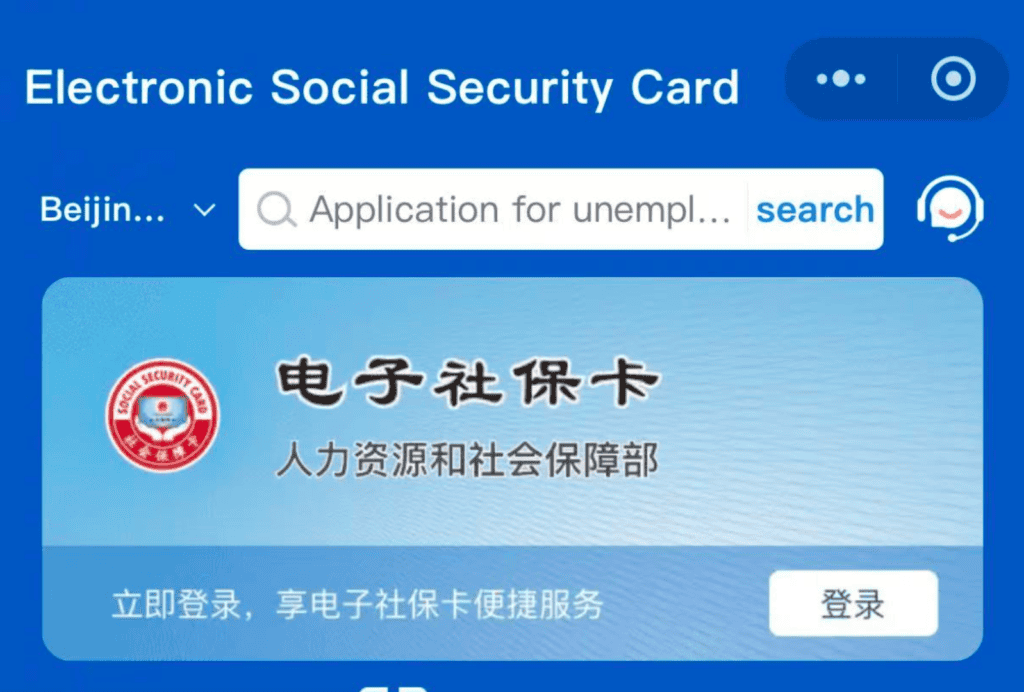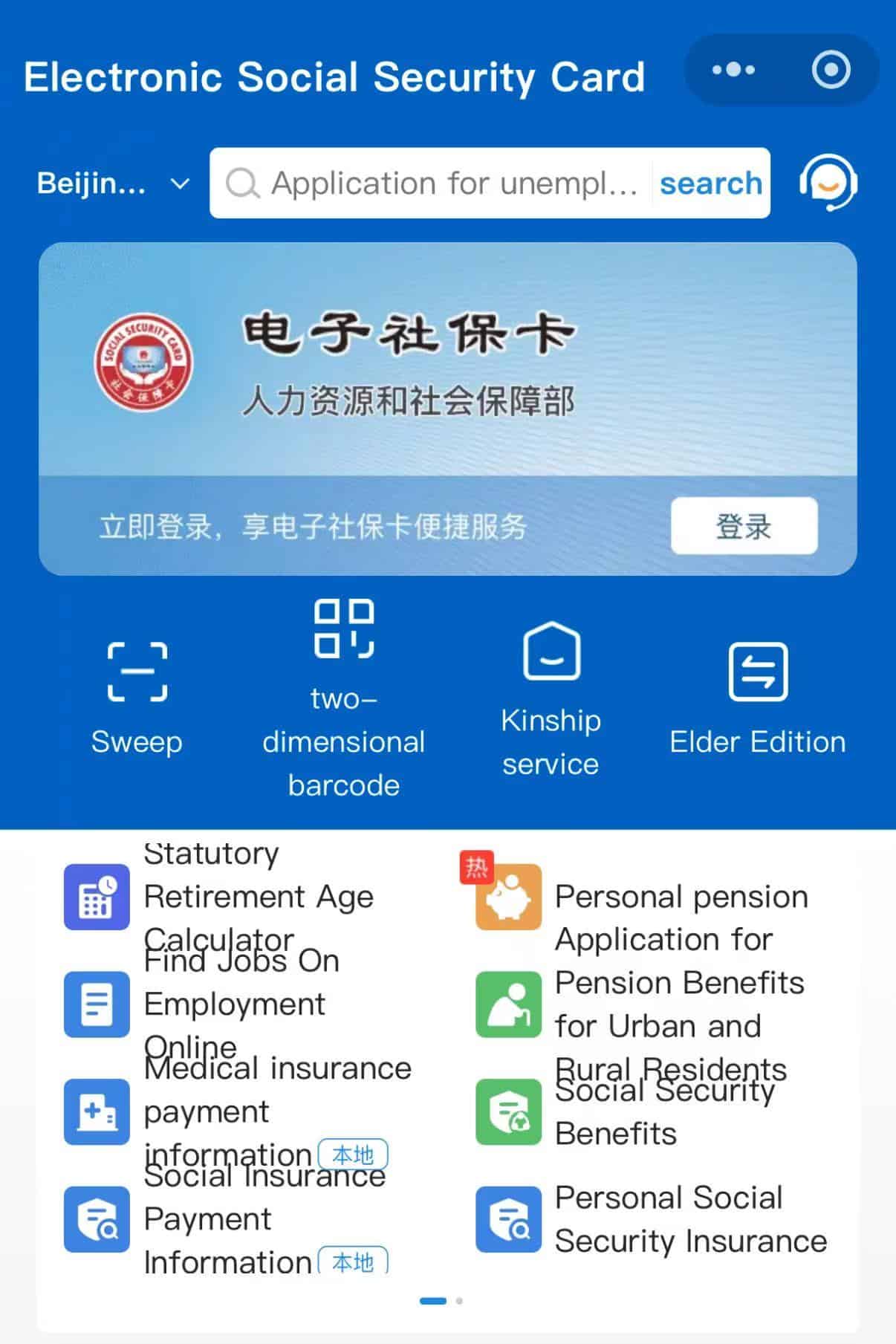• In the future, foreign nationals can also use the social security card APP (which we couldn’t find) or 电子社保卡 Mini-Program to register and complete identity verification using their name, work permit number, or social security number, and then receive an electronic social security card that includes their work permit information (workplace, position, work address, social security payment records, etc).
• This integration should be a step forward in simplifying the complexities often associated with working in a foreign country. Foreign nationals will no longer need to carry multiple physical cards or navigate separate processes for work permits and social security registration.
• As is often that case, the implementation is still ongoing and a lot of questions remain unanswered. For example: employers most likey won’t be able hold work permit cards anymore, this might force all companies to provide social security, etc. Below is an overview of what we know now.
• The Mini-Program doesn’t seem to be available in English yet, so hopefully an update will follow soon. Or click the 3 dots in upper right corner and select ‘translate’.
What is social security?
According to Chinese law, foreign workers hired by Chinese employers, or expats who are sent to work in their foreign employers’ branches or representative offices in China, are required to join the social security program that covers basic endowment insurance, basic medical insurance, work-related injury insurance, unemployment insurance, and maternity insurance.
The fee must be paid by both the employer and the employee. Employers must register their foreign employees with the social security scheme within 30 days of receiving their work permits.
What if you already have physical social security card
If a foreigner has already obtained a physical social security card, the electronic social security card will automatically provide standard services in sync.
Key changes to work and residence permits
The new system eliminates the need for physical work permit cards for those arriving in China. Applications for new permits, renewals, amendments, and cancellations will be handled entirely online. For those currently holding a physical card, it will remain valid until the next renewal or change, at which point the cardholder will transition to the integrated digital system. This transition reduces reliance on physical documentation and aligns with global trends toward digitization in immigration and employment processes.
Upon arrival, foreign workers can download the electronic Social Security Card app and register using their name, work permit number, or social security number. After completing real-name and real-person verification, they will receive a digital Social Security Card containing their work permit details. This integrated card will serve multiple purposes, simplifying identity verification and access to services.
The process for residence permit applications will also see improvements under the new system. Foreigners entering China with a Z-visa and a work permit notification letter will be able to proceed directly with their residence permit applications. Immigration authorities will verify work permit information digitally, either through the centralized system or by scanning the QR code embedded in the electronic Social Security Card. This will eliminate the need for additional paperwork and significantly reduce processing times.
Implementation and Support
To support the implementation of this integrated system, the government is making extensive technical and procedural preparations. Local authorities will expand the functionality of the Social Security Card, making it a more versatile tool for foreigners. System upgrades and equipment enhancements are underway, and interface standards will soon be released to ensure a smooth transition. Additionally, comprehensive training programs are being organized for administrative staff to address potential concerns and ensure the system operates seamlessly.
The introduction of this integrated system underscores China’s commitment to improving the work and life experiences of foreign professionals. Employers and foreign workers alike are encouraged to familiarize themselves with these changes and prepare for the transition to this more streamlined process.




